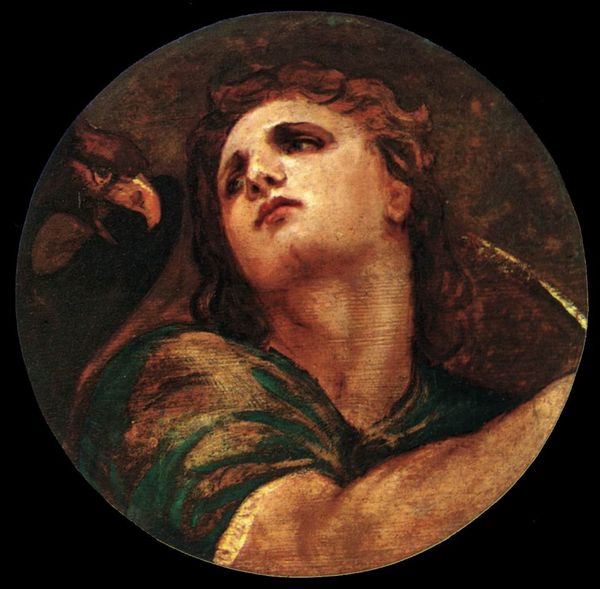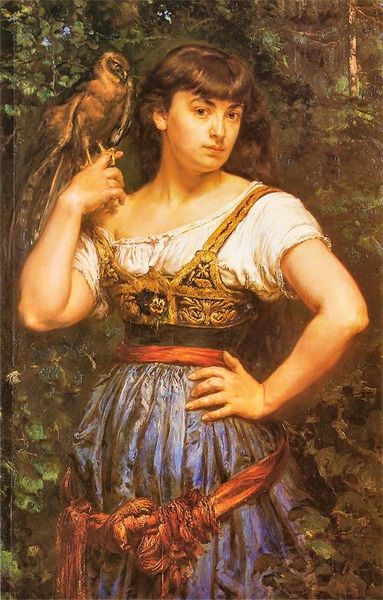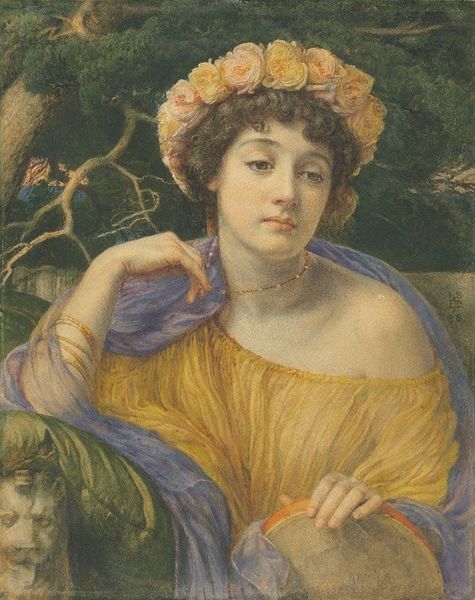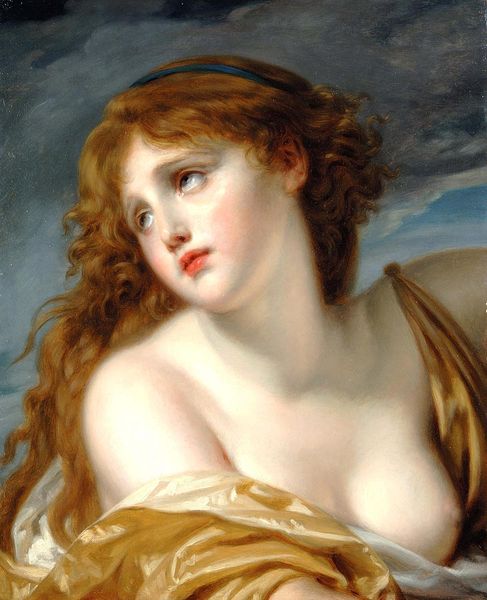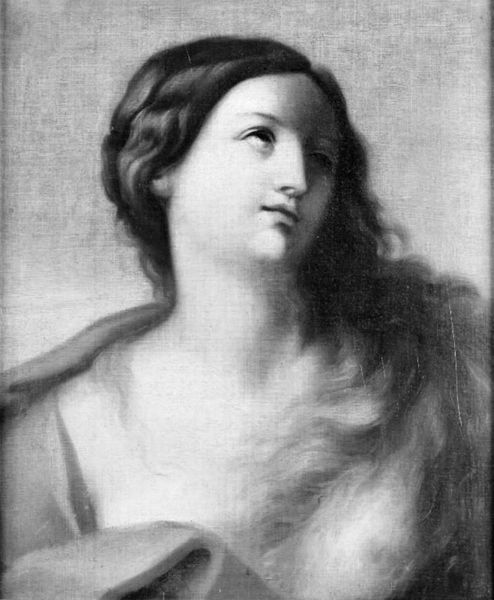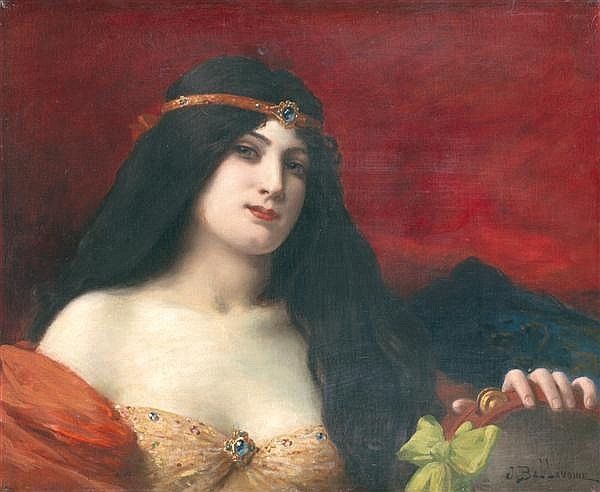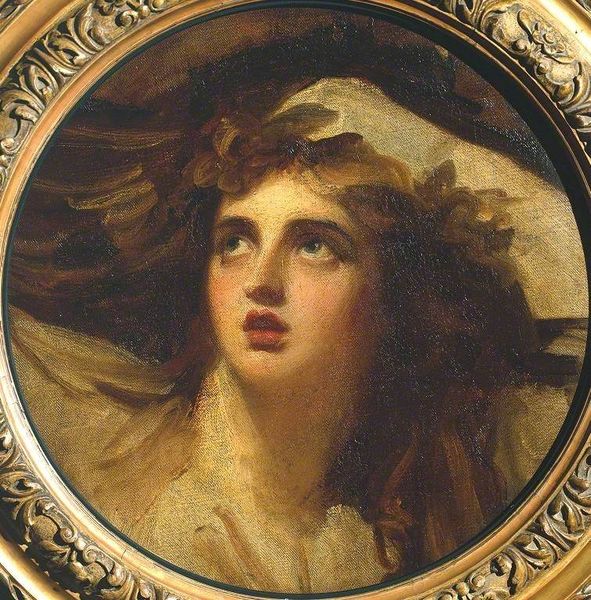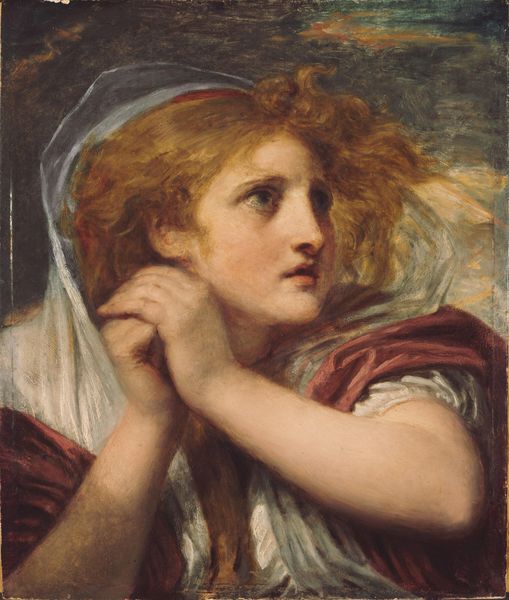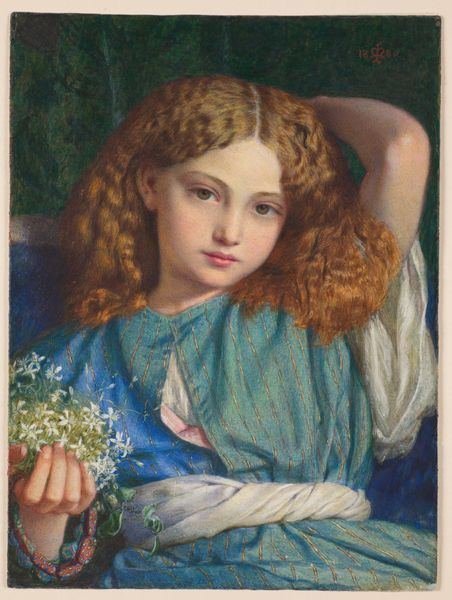
Copyright: Public domain
Konstantin Makovsky painted this Bacchante in oils, capturing a vision steeped in ancient revelry. The most striking element is the vine of grapes and leaves adorning her head. This isn't mere decoration, it's a direct reference to Bacchus, the Roman god of wine, ecstasy, and liberation. The grape vine and its fruit represent both the intoxicating power of wine and the fertility of nature. We see this motif echoed across time, from ancient Roman mosaics to Renaissance paintings, each era interpreting Bacchus and his entourage through its own lens. Consider how the wild abandon associated with Dionysian rituals has been tamed and refined over centuries, yet the underlying theme of transcendence through ecstasy persists. Her gaze, both inviting and melancholic, speaks to the duality of intoxication. It's an invitation, yes, but also a hint of the inevitable sorrow that follows fleeting pleasure. The Bacchante is a potent symbol, a reminder of our complex relationship with pleasure, memory, and the eternal cycle of life, death, and rebirth.
Comments
No comments
Be the first to comment and join the conversation on the ultimate creative platform.



